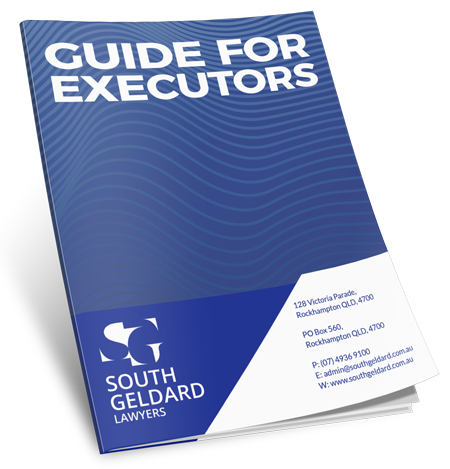“Insolvency” is a term often seen in the headlines recently with the collapse of a number of high profile local companies such as JM Kelly Builders Pty Ltd and Metro Builders, and publicly listed company RCR Tomlinson Ltd and its subsidiaries.
The consequences for central Queensland have been profound with a significant number of small and medium sized enterprises (“SMEs“) facing an uncertain future as they wait to see if they will get paid any moneys owing to them. For some, the fallout may mean they too will have to deal with insolvency themselves.
Insolvency practitioners are called upon to step in when an event of insolvency or near insolvency arises and a period of external administration is required. You may have heard of or be familiar with terms like “administrator”, “receiver” and “liquidator” but, for many SME owners, what that actually means is not always clear.
The different forms of external control and the roles of these practitioners will affect the company and creditors in different ways including your prospects of recovering money owed to you.
This article is written from the perspective of an insolvent company in the hands of an external controller but the principles are relevant to and will provide some insights and guidance for unsecured creditors as well.
For a struggling company, an insolvency practitioner can assist you to better understand your legal obligations and, potentially, find a workable solution to bring finality to your financial troubles. For an unsecured creditor, you need to understand your position and the duties owed to you by the company and other competing creditors.
A company is “insolvent” when it is unable to pay its debts as and when the debts fall due.
An insolvent or struggling company will generally face one of, or a combination of, three different forms of external administration: receivership, administration and liquidation. Each process brings about different outcomes for the company itself (and its related parties), priority creditors, secured creditors and unsecured creditors.
Receivership: Ensuring that everyone is paid
Receivers are usually appointed by a secured creditor such as a bank or other lender after the company defaults on a payment or another non-monetary obligation. The power to appoint a receiver is contained in the relevant security agreement – a mortgage, debenture or general security agreement. A receiver may also be appointed to a company by Court order, often to resolve a deadlocked dispute between directors/shareholders or, in SMEs, as a result of Family Law proceedings.
A receiver’s primary concern is to sell the secured assets and to use the proceeds to repay the amounts owed to the creditor that appointed it. The receiver distributes the money from the sale of the company’s assets in the order demanded by law with secured creditors benefiting first according to the order that their securities were registered.
Directors may remain in office during the receiver’s appointment albeit with limited powers. The directors are still obliged to provide assistance to the receiver.
Administrators and liquidators may also be appointed to represent unsecured creditors during this stage although this can then pose some difficulties for a company if it hopes to later resume trading.
Administration: Is there hope for the company?
When a company is close to being, or already is, insolvent, an administrator may be appointed to take over control of the company. Administrators can be appointed either voluntarily by the directors of the company or involuntarily by a court, a liquidator or the company’s creditors.
The administrator’s role is to take control of the company, investigate the company’s affairs (and report any offences to the regulators), to consider the company’s future and to advise the creditors on potential courses. The intent of administration is to put a freeze on any actions against the company and to repay its debts as swiftly as possible.
Following the first creditors’ meeting, the administrator prepares reports and makes recommendations to the creditors who, at the second creditors’ meeting (20 to 30 days after the administrator’s appointment), decide the fate of a company. The two most common outcomes are that the company enters into a deed of company arrangement (“DOCA“) or it is wound up in liquidation. In some cases, creditors may vote to end the administration and hand control of the company back to the directors.
A DOCA is a flexible form of administration which potentially offers creditors a better return than they would otherwise receive in an immediate liquidation.
A DOCA may allow for the continuation of trade by, for instance, the directors or other involved parties contributing funds or releasing claims, refinancing the company’s debts, and/or the selling some of the company’s assets. The DOCA is binding on all creditors, whether secured (if they have not enforced their security within the prescribed time) or unsecured.
If the creditors reject the DOCA, the company will most often be put into liquidation.
Liquidation: The death of a company
Liquidation is the last option available for an insolvent company. A liquidator can be appointed by the courts, by the creditors or the company itself in a creditors’ voluntary winding up or by the members in a members’ voluntary winding up. Once an insolvent company reaches the stage of liquidation, it is unlikely that it will return to trade.
Liquidators are placed in control of the company and its assets. A liquidator’s role has some aspects in common with that of an administrator, but where an administrator may recommend that a company be revived or wound up, it is the liquidator who will do the winding up. The receiver must call in the company’s assets, sell those assets, investigate the affairs of the company and report any wrongdoing, and pay the company’s debts.
A creditor’s chances of recovering all monies owed to it from the liquidation of a company will depend on the value of the assets available to sell and the total debts owed. Typically, however, creditors receive only a fraction of what they are owed.
Where to from here?
If your company is in financial trouble, it is important that you obtain advice from an insolvency practitioner or lawyer early to give yourself the best opportunity to achieve a decent outcome for you as the director, your company and your creditors. Your accountant will often guide you in this direction provided they are aware of your circumstances. The longer you delay in seeking advice, the more limited the options will be.
If you are owed money by a company that has been put into the hands of an external controller, you must act quickly as there are important deadlines of which you must be aware if you are to preserve other rights you may have.
If you require any assistance or any further information if relation to the matters discussed in this article please do not hesitate to contact our Rockhampton Business and Commercial Lawyers.
It is important to seek specific advice regarding your circumstances as this fact sheet provides general information only and does not constitute legal advice.


